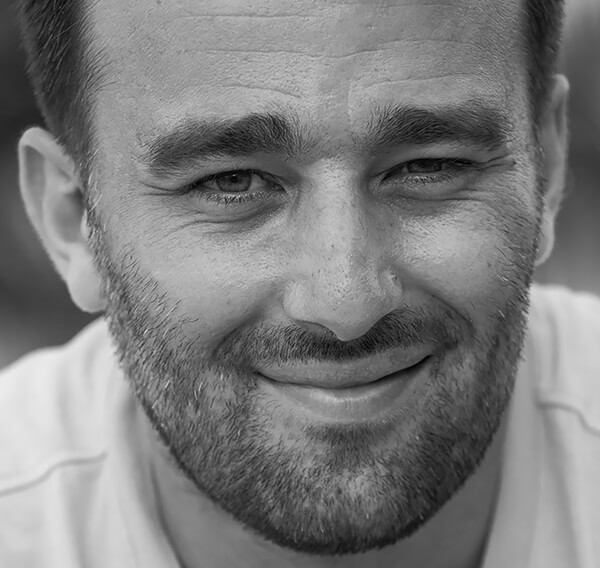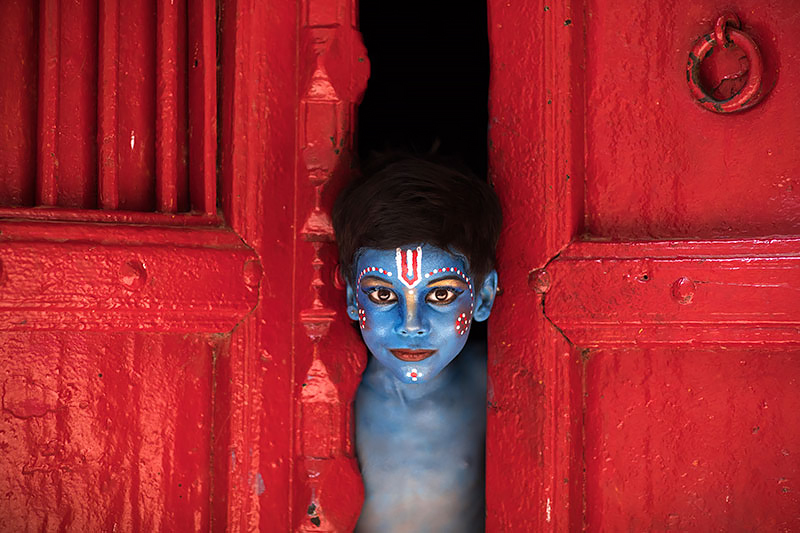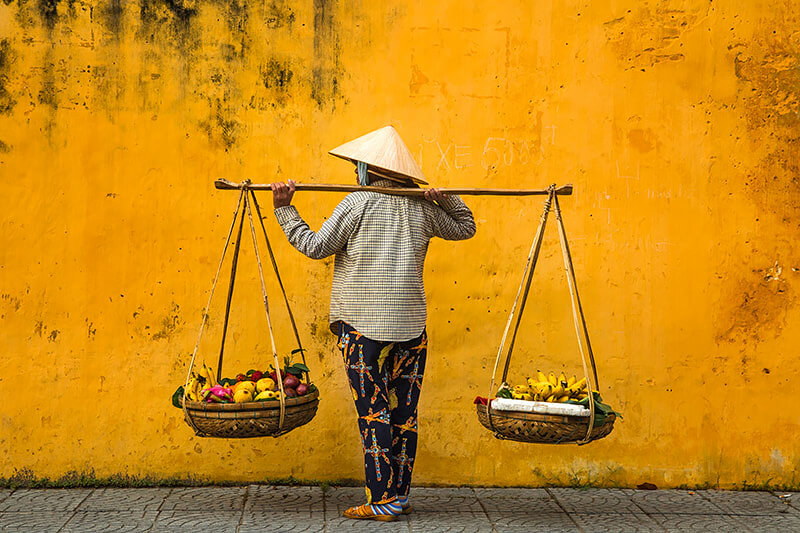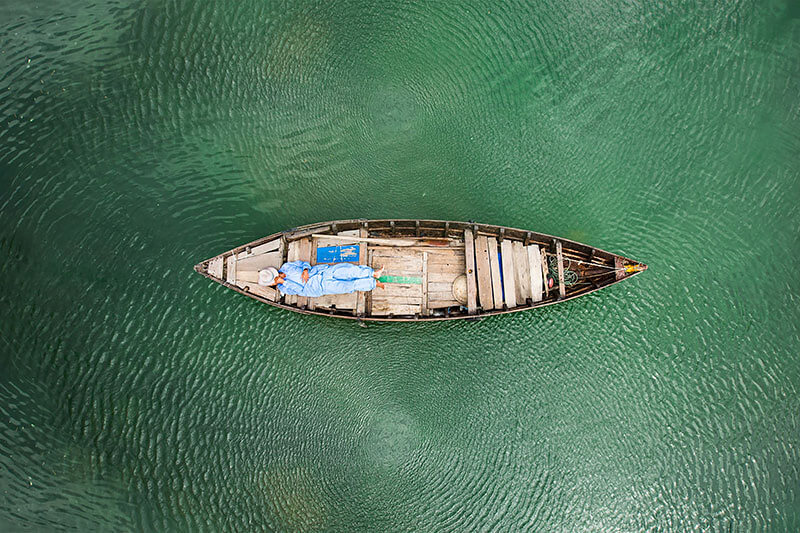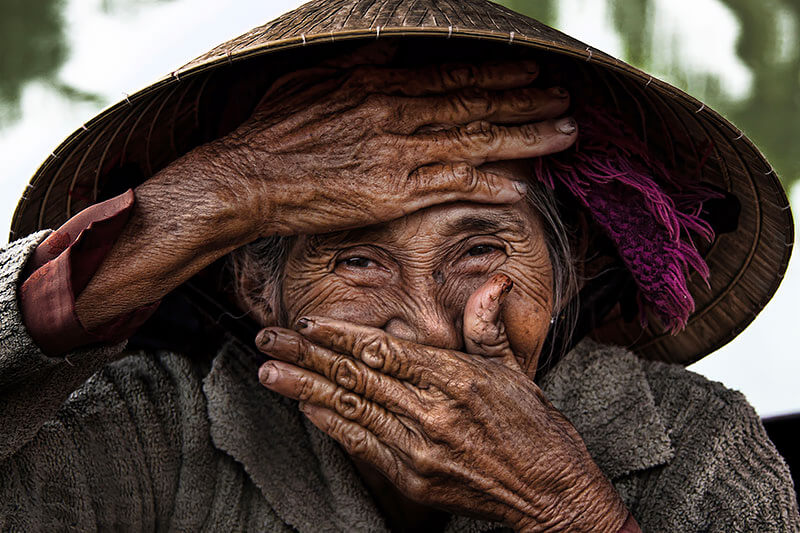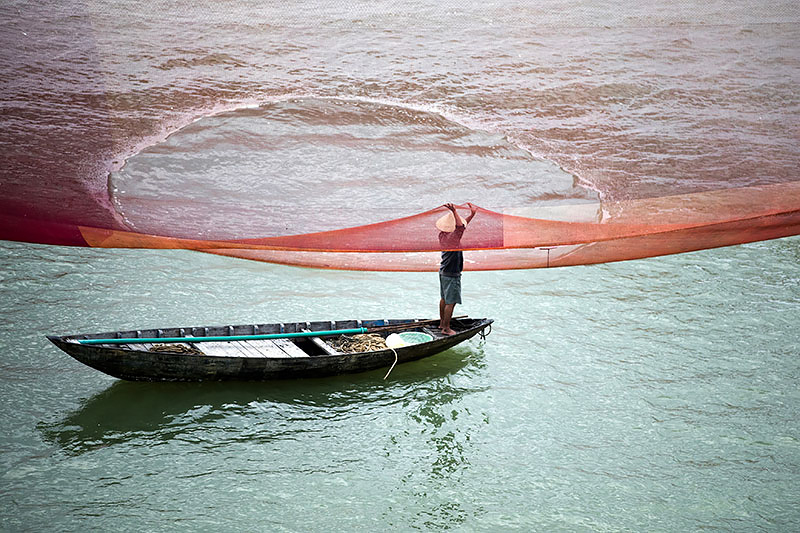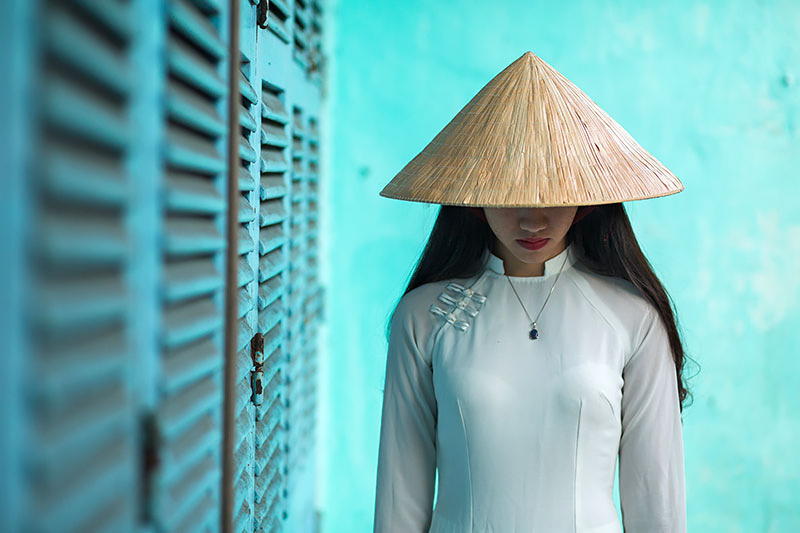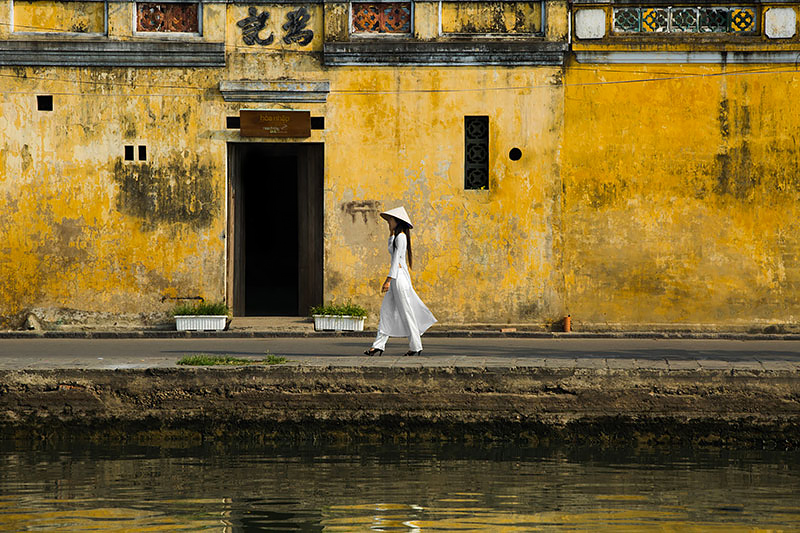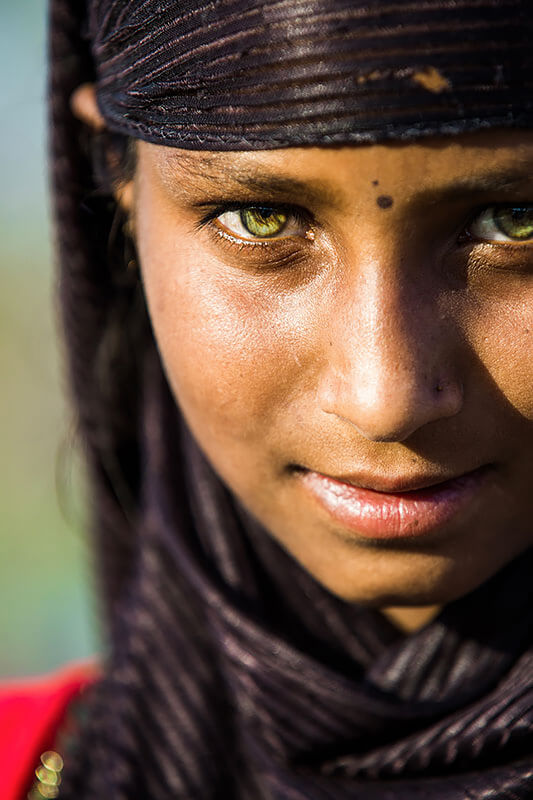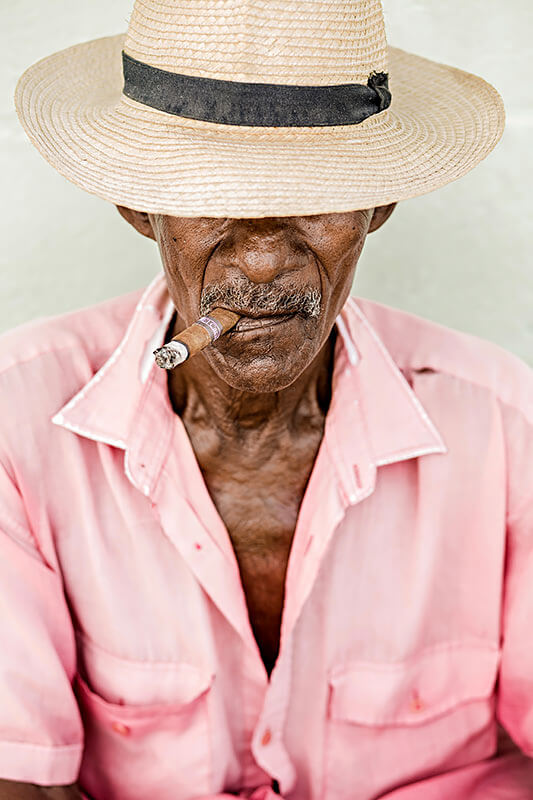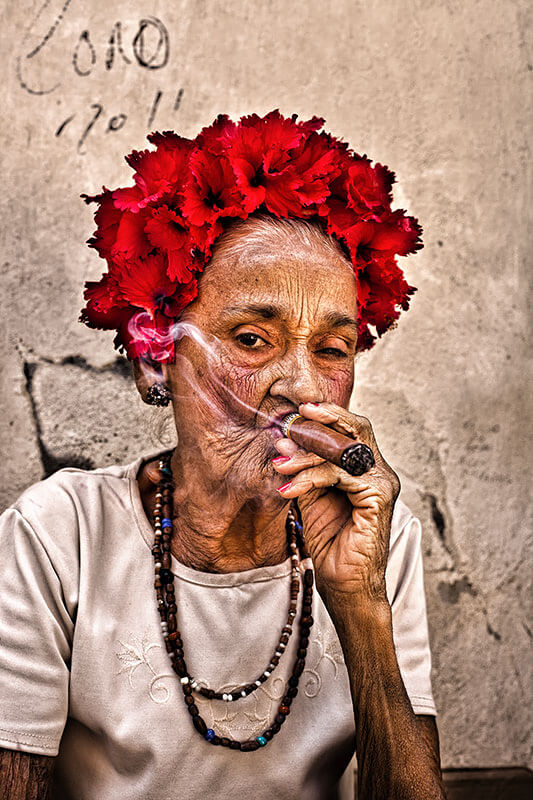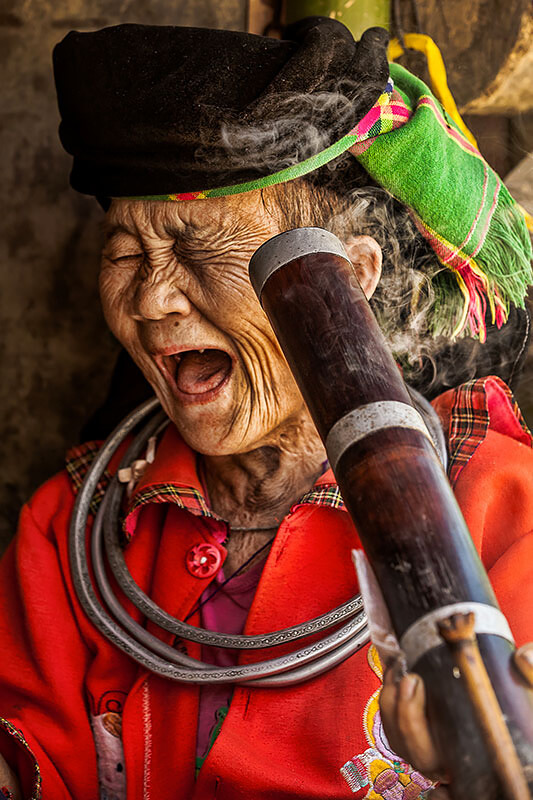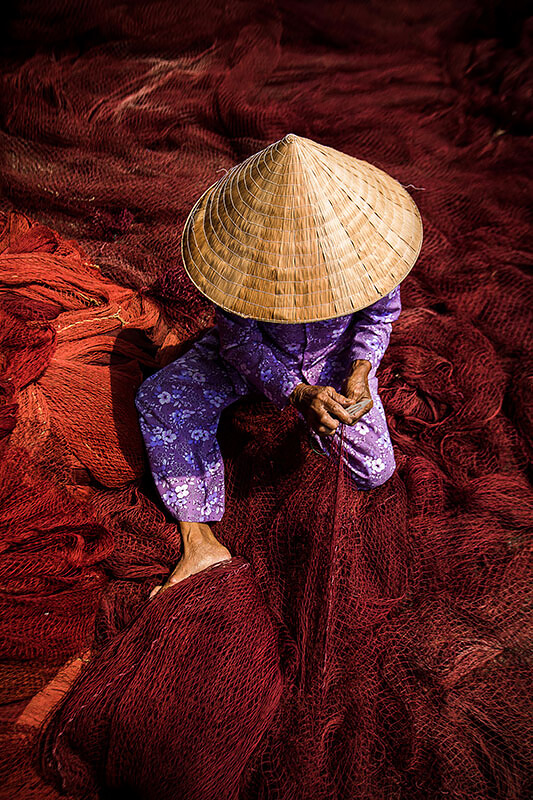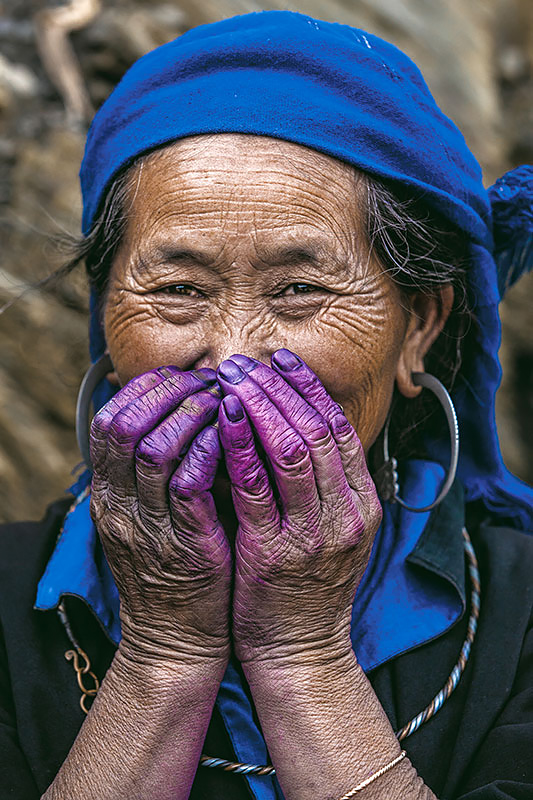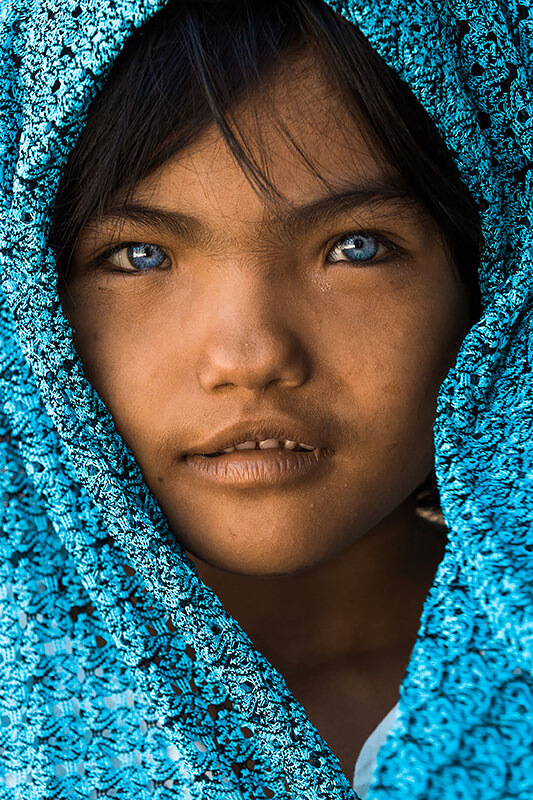Referred to as someone who captures the souls of his models, (Wanderlust Travel Magazine, 2018) Réhahn is more than just a man behind a camera. Behind each click is a story. Whether the photograph shows a child with startling blue eyes, a woman pulling a needle through indigo fabric or a man walking alone down a brightly painted street, these are more than just images to Réhahn. They are the culmination of an experience. The stories of his subjects as well as his passion to learn more about their culture, diversity and changing traditions are what drives Réhahn's work. We asked him a few questions about his life and work.
All About Photo: Tell us about your first introduction to photography. What drew you into this world?
Réhahn: I started taking photos as many people do - for my own pleasure. Initially, travel was my main passion and it seemed natural to want to take photographs of the places I went. Eventually, I realized that my camera was the perfect travel partner. It gave me a reason to speak to people in the countries I visited and a different way of looking at the world.
Why did you sell your business to become a full time photographer. What triggered this decision?
To put it simply, I wanted more out of my life. I'd visited Vietnam on a humanitarian mission and the country and its people kept drawing me back. When I went back to France between voyages I found that I was spending my time dreaming about the next time I could leave. So finally I decided to take the leap and move here. I've never looked back.
What was your biggest challenge in changing careers? How did you manage to obtain assignments?
It came naturally. I've always been motivated to learn new things and to challenge myself. So jumping into a new career was more of an inspiration than a hindrance. As a photographer, I chose to do my own work rather than to work on assignment for a magazine or news outlet. I would say that my biggest challenge was learning how to speak Vietnamese so that I could better communicate with my team and my subjects.
Do you remember your first shot? What was it?
More than the first shot that I ever took, I remember my first photograph that was ever published. It was of a little Peruvian girl named Rosalia and it won the LA Times annual photo contest in 2011. It was a major stepping stone in my career.
You traveled in many countries, did you finance your trips at the beginning? Now?
When I first started traveling I was still working in my previous career in France. I would save up my money and vacation days and plan out where I wanted to go next.
How do you choose your subjects? Is it a long process?
My response to this is a bit complicated. For my fine art work, I don't choose my subjects as much as I let fate find them for me. I simply travel around to places I'm interested in and ask permission to take a photograph when someone catches my eye. Beyond that, once I get to know someone I might go back and take more portraits of them. Part of this is for my photography but another aspect is that I simply enjoy talking to people and hearing their stories. For the more documentary style of photography that I used for the Precious Heritage project, I didn't choose my subjects in advance but I did travel to specific areas to meet each of the 54 ethnic groups in Vietnam. Learning about the different tribes took a lot of research and was a long process.
How do you prepare for your trips?
Research. Research. Research. I try to learn as much as possible about the place I will go to before I arrive. That said, a great many places I've been to have little or no current information available about them. In that case, I have to rely on verbal information and try my best to prepare based on guesswork.
Why did you decide to move to Vietnam?
When I still lived in France I decided to support the education of a young Vietnamese girl through the NGO “Les Enfants du Vietnam.” Eventually, I traveled to Vietnam with this organization to meet her and I fell in love with the country. I moved to Hoi An to be able to remain in contact with the child I was sponsoring as well as to explore the beauty of the country with my camera.
Apart from Vietnam, what other country/people touched you the most?
I've been to Cuba 15 times and counting. It's like a second home to me. I love the Cuban philosophy and way of life.
Your images are very intimate, and it is even said that you 'capture souls', how do you manage to get so close?
Respect. I never take a picture of someone who doesn't want to be photographed. I approach people with the hope of learning more about them, rather than thinking about how their faces might look on a gallery wall. Through this method of interacting with people, I've met some of my closest friends!
What is the population's response to your camera in general?
It really depends on the country. I find the Vietnamese to be quite happy to be photographed, and also easy to talk to. India is the most difficult place to travel as a photographer. Indians are typically wary of cameras and it can be hard to start up a conversation. My success there has been in taking my time and being respectful of people. I may not get as many photos in one day as somewhere else but the ones I get are worth working for.
Is there a country where you were unable to take portraits?
No. There have been places classified as sensitive in Vietnam that I went to for my Precious Heritage project. Sometimes I had to wait years to get permission to visit and to take photographs. But in the end, after a lot of effort, I was always able to capture at least one shot.
What makes the difference between a good image and an iconic image?
The way that it makes people feel. A good shot can blur into the background. An iconic shot is the focal point of a room no matter where its placed.
Can you tell us more about the Precious Heritage Project?
I started the Precious Heritage Project a little more than 10 years ago now. It started out of personal interest to learn more about the diverse people living in Vietnam. However, once I got a little bit of knowledge I thirsted for more. In the end, I traveled thousands of miles and spent nearly a decade collecting stories, portraits, and traditional tribal-wear for The Precious Heritage Museum that I opened in 2016. The goal of the museum is to share the beauty of these ethnic groups in a respectful way as well as to preserve elements of their cultural heritage since many crafting techniques and traditions are slowly fading away.
How do you manage your time as a photographer and as a humanitarian?
They go hand in hand. I started my Giving Back project as a way to give assistance and show my gratitude to my subjects. A lot of the photographic work I've done over the last decade has revolved around the ethnic groups in Vietnam. The more I learned about these groups the more I realized how important having the opportunity to pursue an education is for their children. My Giving Back project naturally turned towards larger scale education and cultural projects that could directly help these fragile communities.
What compliment touched you the most or what do you think is your biggest accomplishment?
I recently received a beautiful personal letter of support from Christina Noble of The Christina Noble Foundation. It was moving to have someone who has done so much good in the world honor the work that I'm trying to do.
My biggest accomplishment is definitely The Precious Heritage Museum. The museum spans more than 500 square meters and is filled with cultural artifacts and the portraits and stories of all 54 ethnic groups.
Why do you work mostly in color?
I'm inspired by the colors of the world, which are so different in each country and culture. Hoi An is a town awash with yellow tones while Jaipur in India is known as The Pink City. How could I photograph these historically important places without showing the beauty of their unique colors?
What equipment do you use?
I use Canon 5D Mark IV
What are your upcoming projects/trips?
Like most people in the world right now, I'm waiting to plan anything until the current health crisis is under control. As soon as I can I want to go and visit my dear friends in Cuba. In the meantime, I have many research projects underway regarding Vietnamese traditions.
Do you spend a lot a time editing your images?
I like to keep my photographs as natural as possible so I don't spend a lot of time adding filters. That said, I do take an enormous amount of photographs so it takes time to go through the files and choose the best shots and to crop them, etc.
Do you have a mentor? A favorite photographer?
I love the work of Steve McCurry.
What is your best memory as a photographer? An anecdote you would like to share?
Meeting Madame Xong on one of my first visits to Vietnam is an irreplaceable memory. I can truly say that her face launched my career and she has become like a dear grandmother to me.
What is your worst memory or challenge on the field?
I wouldn't say that I have a particular bad memory because experiences that were difficult at the time turned into learning moments in the end. That said, the place that challenged me the most was Varanasi, India. The heat, smells, and long days pushed me to my limit as a photographer and a human. But I wouldn't trade those experiences in for a vacation spent relaxing in a beach resort instead. The challenges are part of what has made me grow as a person.
What advice would you give someone who would like to become a photographer today?
I would say to be inspired by others in the field but don't copy. Be an artist, rather than an artisan of photography. An artist is someone who can invent something new. Someone who has the techniques to reproduce the Mona Lisa but doesn't have his/her own ideas is an artisan. Both types of photographers take talent but only the artist pays homage to his/her inspirations through the creation of new work.
Do you miss France? Do you think you will ever go back?
I miss certain aspects of France such as the museums, beautiful antique bookstores, and the theater. But, I can't imagine giving up my life in Hoi An any time soon.
Réhahn's Website
Réhahn on Instagram
All about Réhahn